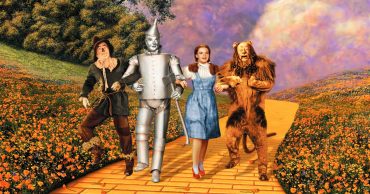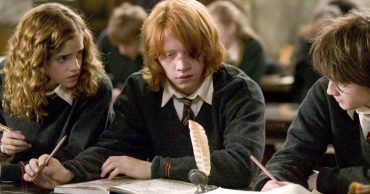
Movies that have courtroom scenes in them are among the most popular for moviegoers. Everyone knows the famous Jack Nicholson line from A Few Good Men, “You can’t handle the truth!” The classic Judgment at Nuremburg is both engaging and a reminder of how world history affects us even today. What is interesting is that movies, unlike most TV shows about courtroom dramas, give us a single line or two that will stick out in minds for the rest of our lives.
But not all courtroom scenes are dramatic and deadly serious. Who can forget Reese Witherspoon’s journey through Harvard Law School in Legally Blonde where she ends up defending a client before she even graduates? My Cousin Vinny opened the door for Marisa Tomei’s career by being a key expert witness as an auto mechanic turned hairdresser.
It’s safe to say that movies with courtroom scenes are so popular because there is something for everyone. Just remember that real life courtrooms usually don’t function like those in the movies. Here are 20 of the best courtroom scenes, some which go back more than 50 years.
1. And Justice For All
You have to wait until the very end of the movie to get what many consider is the best courtroom scene ever. The reason is not because of the drama, but because Pacino lays out exactly what the justice system is all about — until he then shows how out of whack it really is. In 1979 the issue of social justice was getting more attention again, and the final courtroom scene covers racism, sexism, loony judges, and a corrupt legal system. But I have to ask Hollywood to leave this film alone and do not remake it. Your good intentions to make money will disparage this great movie.
2. A Few Good Men
Three of Hollywood’s brightest stars appear in this film and the final courtroom scene — Jack Nicholson, Tom Cruise, and Demi Moore. Moore’s role is minimal, but the confrontation between Cruise and Nicholson is one of Hollywood’s classic courtroom memories. For many people, it was the first time they heard the word “conundrum” used to describe a movie scene. Nicholson actually had a small part in this movie, but there is no doubt he left his theatrical imprint on viewers that will be remembered for years.
3. Judgment at Nuremberg
The Nuremburg Trials held at the end of World War 2 sought to bring some type of relief and closure to the many families of the Holocaust survivors and to the people whose countries had been decimated by the attempt of Nazi Germany to conquer the world. The ending courtroom scene was the climax to the film, at a time when many people were not aware of the actual proceedings. The question before the court was, who do you hold accountable for the evil that was done when an entire nation had blood on their hands, either from willful participation or willful ignorance?
4. My Cousin Vinny
The idea of the perceived incompetent lawyer who manages to win their case is not an uncommon one in the movies. Joe Pesci, who plays the incompetent lawyer in this film, gets help from an unexpected expert — his girlfriend Marisa Tomei. Once again, you have to wait for the ending to see the best of the courtroom scenes in the movie. Not written as a serious film, there is enough levity to keep you from getting too worked up over the incompetence, but not so much that you lose sight of the fact this is a movie about the legal process.
5. Breaking Morant
No list would be complete without at least one military courtroom being present. Set in South Africa, Breaking Morant gets the initial nod here as the theme of the movie is whether a soldier who admitted killing a prisoner is actually guilty of murder when the rules of engagement are unclear. This is a theme that continues to be debated in dealing with terrorists and domestic terrorism today. The ending courtroom scene is the foundation of the debate as to whether men are bund by the rules of law or the rule of nature known as self-preservation. The power of the courtroom scene is not in its presentation, but in the arguments made in the defense of Lieutenant Morant.
6. Primal Fear
For unknown reasons, movies about the law and specifically about the actions that take place in the four walls of a courtroom are springboards for the careers of some actors. Ed Norton found his launching pad in Primal Fear as a troubled young man, Aaron, who has been assessed with having a multiple personality disorder. The dilemma is getting his counterpart, Roy, to show himself and take responsibility for the gruesome murder he is accused of committing. For first time viewers, you really want Roy to show himself and bring some closure. The cross examination by Laura Linney is powerful and the ending is what seals the deal for Ed Norton’s future.
7. Inherit the Wind
Some movies of the legal genre reflect the current debate that goes on within a country. Made in 1992, A Few Good Men argued the case of the value of discipline in the military and the responsibility of commanders. But Inherit the Wind actually created the debate about the stifling impact 1950’s McCarthyism was having on intellectual exploration in the public school system. It follows the play by the same name, and the ending courtroom scene is one which ends up being a political compromise. Depending on your position, you many find the ending either justice had been delivered or the jury is still out on the matter.
8. Miracle on 34th Street
Even though you already know the ending to this movie (you do believe in Santa Claus, right?) what is great about this almost 10 minute long ending courtroom scene is that you want Kris Kringle to win. Courts generally tend to be kind to older people, so seeing Kris awaiting his fate makes you cringe at the prosecution. The evidence presented in defense of Kris illustrates the difference between direct and circumstantial evidence. But the potential sentence is the loss of credibility. Jail, prison, or death are not possible consequences of the outcome. Santa Claus is safe once again as we approach the holiday season.
9. Kramer vs Kramer
Before divorce and child support custody hearings became as common as fast food restaurants, Dustin Hoffman and Meryl Streep squared off in a custody battle for their child Billy in Kramer vs. Kramer. The compelling courtroom scene comes from the testimony of a young Streep as she makes her case for custody of their son. Her argument, which is still controversial, is based on her maternal rights and the fact that Billy belongs with her as an extension of that right. Streep’s performance is convincing, The movie won a total of 5 Oscars: Best Picture, Best Director, Best Adapted Screenplay, Best Actor and Best Supporting Actress.
10. A Civil Action
Most films that have courtroom scenes often use them as the climax of the movie or at the end to wrap things up. John Travolta stars in A Civil Action and opens the movie pushing his client in a wheelchair to the courtroom. The entire opening courtroom scene sets the direction and tone of the meeting, which is serious enough to keep you interested but implausible enough to have you wondering about the legal system. Using the idea that personal injury claims are about “the show” the director pans the entire courtroom, leaving no one out — jurors, prosecution, defense, and judge are all part of the scene. And just when you think the trial is about to begin, it doesn’t. It is one of those movies that you hope is not an actual reflection of the way the legal system works, yet from this opening scene you are almost immediately convinced that is the case.
11. The Verdict
It is actually scary how some movies not only strike right at the heart of an issue, but how those issues remain and the arguments used 20 and 40 years ago can still be used today. The courtroom scene in The Verdict is one of those movies. Paul Newman, playing an alcoholic lawyer, sums up in two minutes the dangers of manipulating the justice system. Like a cancer, it spreads throughout the body politic and strangely, returning right back into the legal system. Unlike some monologues that drone on and on, the courtroom defense is summed up compactly and directly.
12. Legally Blonde
In Legally Blonde, there are actually two courtroom scenes worthy of mention. Many people remember the ending where Elle Woods, played by Reese Witherspoon, stumbles her way through the defense’s cross examination of the witness, but she is saved by her unique knowledge of hair styling. The second scene is a much shorter one, where she once again uses her “girly girl” acumen to reveal that one of the witnesses is lying. The movie is actually about how brains are hidden by beauty as Elle Woods gets admitted to Harvard Law School, but the writers apparently knew the value of a courtroom scene to a movie’s success. Witherspoon is a tremendous hit throughout the movie, warranting the production of Legally Blonde 2, which naturally doesn’t end up with the same box office result.
13. Law Abiding Citizen
While Law Abiding Citizen may not qualify as a movie about courtroom justice, – in fact, most of the movie takes place outside of the courtroom, the scene that expresses the frustration of so many people is a simple bail hearing. Whether you are a person who has actually stood in front of a judge or are someone who is simply fed up with the news stories about guilty people going free because of a lawyer failing to cross a “t” in a few short minutes a case for returning common sense to justice is presented. Gerard Butler plays Clyde, an accused murderer, and Jamie Foxx is the prosecutor looking for a quick plea bargain to move the legal process along. Despite the guiltiness of Clyde, somehow after this scene you hope he manages to get set free.
14. Crimson Tide
Another military courtroom scene that explores the dilemma of making life and death decisions in a state of war. Though this scene is less than two minutes long, it ends up doing three things. First, it leaves the viewer somewhat unsatisfied because both Hunter, played by Denzel Washington, and Ramsey, played by Gene Hackman, are judged by the court to both be wrong and right at the same time. Yet it illustrates how the law does not have all the answers, and is a process more than a final verdict. Second, neither Hackman nor Washington say much in the scene. But at this point in the movie the facts are collected through the viewer’s perspective, so it eliminates the need for repeating what has come before. Finally, the testimony of only one side has been heard; the defense has chosen to accept the court’s judgment. We like clean endings, but Crimson Tide is not offering one.
15. A Time to Kill
This movie is chocked full of stars, including Matthew McConaughey, Sandra Bullock, Samuel L. Jackson, Kevin Spacey, and Donald and Kiefer Sutherland. The courtroom scene involves the defense attorney’s (McConaughey) claim that the justice system really does not seek the truth, but the truth from a biased, human perspective. The closing argument is a story within a story, and the ending twist has you seriously wondering how you see your own prejudices when given a set of facts. Rather than a dramatic movie moment in the classical sense, this courtroom scene makes the dilemma of justice very personal to the viewer. McConaughey would later go on to star in The Lincoln Lawyer which has him once again trying to seek justice for his client from a clearly imperfect system.
16. To Kill a Mockingbird
This 1932 Gregory Peck film is based on the book that is often required reading in schools. Much of the movie is set in the courtroom, but it is the cross examination of the rape victim, Mayelle Ewell, that makes this particular scene so compelling. After her testimony is brought into question by defense attorney Atticus Finch, played by Peck, the heart of the trial becomes clear. No longer is there an issue of justice before the viewer, but one of prejudice against blacks. As a matter of history, blacks did not have many rights in 1932, so the question the movie and the courtroom scene brings up is whether simply being black is enough to be found guilty. Peck is a cool and composed defense attorney throughout the movie, and in the end asks for simple justice to be applied based on the evidence.
17. JFK
Oliver Stone gives us yet another “questioning America” film by exploring the evidence of the JFK assassination. Kevin Costner takes the lead role as New Orleans District Attorney Jim Garrison whose job it is to seek the truth of the matter, sifting through all the evidence and asking the jury to judge the matter by the facts with the end goal of having all of the available evidence being opened to the public for further examination. The ending courtroom scene hits a nerve with many Americans who are not satisfied with the government’s handling of the JFK investigation, including the background on Lee Harvey Oswald who never lived to stand trial for the assassination.
18. Anatomy of a Murder
Jimmy Stewart was one of the most beloved actors of his time, and in this movie he defends a man accused of murder as an act of revenge for raping his wife. The courtroom scenes are all acted with typical Stewart energy and style, but the one that stands out is the objection that the prosecution is trying to separate the motive of the crime from the act itself. After getting the judge to overrule the objection, Stewart ends up having to go down an uncomfortable road for the defense: the necessity to allow into evidence the details of the rape. This was 1959, and the first time the graphic nature of rape had been depicted in a movie. The courtroom scene ends up being groundbreaking and opened the door for future films about rape such as Jodie Foster in The Accused.
19. The People vs Larry Flynt
Ed Norton gives a basic but necessary argument as the defense attorney for Hustler publisher and general pornographer Larry Flynt. The argument is so basic that it in itself is what makes it great. The problem is the same in 1995 as it is today — the right of a person or business to publish objectionable material. The conflict between what one person believes is right or moral and an opponent’s view has been going on in America since its inception. The scene also explains the issue without any particular passion by Norton, which is needed for people to understand that the administration of justice is to be done without prejudice. Admitting that he does not personally like his client or what he does sets the jury to hear what is a straightforward explanation about Flynt’s rights under the Constitution. A conviction would deprive him of those rights and endanger the rights of every viewer.
20. Good Will Hunting
Wanting to end the list on a less serious but more controversial note, Good Will Hunting, like many smart writers, contains a courtroom scene that should make you wonder whether or not knowing the law makes any real difference. Hunting, the character played by Damon, is a well-read mathematical genius who has a near photographic memory. In this courtroom scene, he is being charged with assaulting a police officer (which he is clearly guilty of) but chooses to represent himself based on his knowledge of the law. It is not clear that Hunting understands the procedures of the court, muddying the water about his decision making to represent himself. But the courtroom scene has an almost inevitable ending to it regardless of Hunting’s defense. The scene has us asking more questions about the legal system than we get answers to, which actually is directly connected to the overall theme of the movie.
The list will most assuredly be criticized for some of its choices, yet many of the characters in the classic choices of the greatest courtroom scenes are people who themselves chose to swim against the current in hopes of finding a new perspective to life. It is likely that the most popular choices have been made by a set criteria against which all others are compared. In the end, the final verdict of which courtroom scene is the greatest will never be reached.
There are lighthearted scenes in the list and there are many serious ones that affected the future of America. In defense of both, movies should get us to think and reflect about where we are as a society. These 20 movies should do that whether you agree or disagree with the choices. By the way, they are not ranked in any specific order.
 Follow Us
Follow Us





